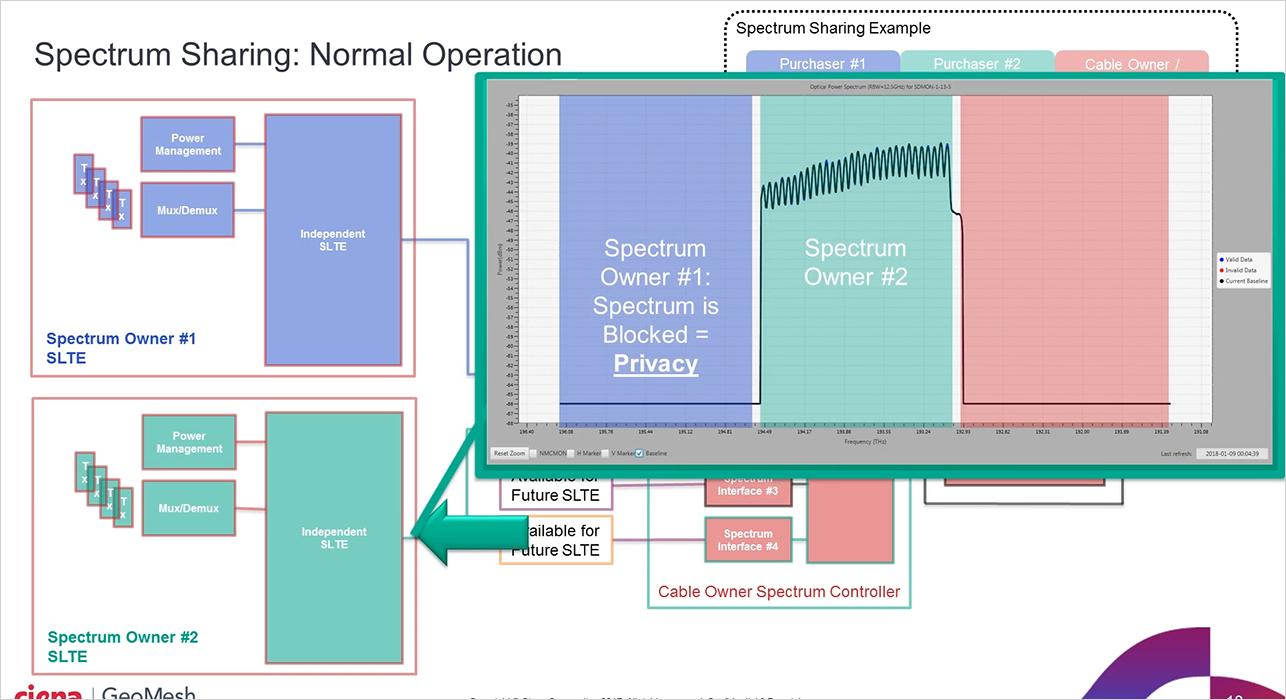Virtualize Your Submarine Cable
There Is No Plan B
The submarine network industry has quickly emerged from a relatively unknown and obscure part of the global Internet to being rightfully known and recognized as "critical infrastructure" carrying upwards of 99% of all communications traffic between and along continental landmasses via repeatered (amplified) and unrepeatered (unamplified) submarine cables. These submerged engineering marvels are the jugular veins of interconnectional connectivity and will continue to fulfill this critical role, as there is no “Plan B”. Satellite networks aren’t viable transport alternatives, as they simply can’t carry the amounts of traffic flowing across these submerged information superhighways at the same economies of scale of optical cable networks.
Given no viable alternative, the telecom industry must actively protect the existing submerged infrastructure while continuing to innovate upon submarine network technology, which mainly includes the submerged wet plant (fiber, repeaters, and branching units) and Submarine Line Terminating Equipment (SLTE) that are connected at each end of a submarine cable transmitting data to and from distant end-points, which are increasingly inland for submarine-based Data Center Interconnect (DCI) applications.
Ongoing growth in subsea bandwidth demand, primarily driven by Internet Content Providers (ICP) and their DCI applications, continues unabated. Are there any new technology tricks our industry can pull out of a hat to enable massive increases in new submarine cable capacity, while also pushing out the dreaded Shannon Limit? Seems challenging, but fortunately the answer is – yes – by leveraging a tried and true technology.
Exploiting the Long Band (L-band)
About a decade ago, our industry faced a rather similar situation to today. The transmission technology of the day was On-Off-Keying (OOK) that shuttered a laser on and off to send binary bits (ones and zeros) down a terrestrial optical fiber. Although OOK had its limitations, especially compared to what’s currently possible, it worked well, and for a while sufficed in maintaining pace with relatively modest bandwidth growth.
Things soon changed with the growing popularity of the emerging “Information Superhighway” and its many demands, with our industry quickly coming to a point where we couldn’t squeeze any more 10G channels into a single optical fiber. Something had to be done – besides continually deploying more terrestrial optical line systems – as 40G was still a distant twinkle in the eye of some ingenious individual. Focus turned to the fiber itself.
Our industry has traditionally focused on the Conventional band (C-band), from 1530nm to 1565nm, of an optical fiber where we stuffed as many 10G channels as we could and as close together as we could. On very high-capacity and constrained routes, this was already being maxed out, so the optical spectrum to the right of the C-band, known as the Long band (L-band), from 1565nm to 1625nm, was explored. There are also other optical fiber spectrum bands identified and used in non-submarine applications, as shown in Table 1.
| Optical Fiber Wavelength Band Name | Common Band Naming | Wavelength Range (nm) |
| Original band | O-band | 1260 –1360 |
| Extended band | E-band | 1360 – 1460 |
| Short band | S-band | 1460 – 1530 |
| Conventional band | C-band | 1530 – 1565 |
| Long band | L-band | 1565 – 1625 |
| Ultra-long band | U-band | 1625 – 1675 |
Table 1: Optical Fiber Spectrum Band Ranges and Naming
What’s Old Is New Again (Almost)
Although L-band isn’t new to terrestrial networks, it’s new to submarine networks, and is yet another example of technologies originally conceived in the terrestrial realm finding their way into the submarine realm. Like evolving from the primordial soup, albeit this time from land to sea! Vendors with extensive L-band terrestrial network experience can readily leverage their existing knowledge and real-world field experience to reliably adapt and incorporate L-band modems into their existing SLTE to support both C-band and L-band, which doubles the available optical spectrum. This essentially doubles the addressable revenue along a submarine route, while offering greatly improved economies of scale. Expanding on the C-band to include the L-band also facilitates the introduction of new and differentiated services based on Spectrum Sharing.
What Is Spectrum Sharing?
Spectrum Sharing refers to the logical partitioning of optical spectrum of a submarine optical fiber pair among multiple different end-users, as shown in Figure 1, such that each end-user “sees” his own dedicated, albeit virtualized, fiber pair. Virtualizing a fiber pair makes more sense on newer submarine cables supporting wider repeater bandwidths, which yields more available spectrum to partition among multiple users. Newer cables include uncompensated C-band cables as well as new, uncompensated submarine cables that support C-band and L-band on the same cable, such as those from undersea communications systems supplier, TE SubCom.

Figure 1: Virtualizing Submarine Cable Fibers via Spectrum Sharing
The submarine industry has evolved from offering sub-lambda (electrical) services, to lambda-based (optical) services, to an entire dark fiber pair, as shown in Figure 2. Spectrum Sharing allows for offering capacities greater than one or more wavelengths, yet less than leasing/purchasing an entire dark fiber pair, which very few end users can afford or need, and is achieved by offering an optical spectrum partition to a specific end-user who’s free to lease managed SLTE from the cable operator, or own and operate their own SLTE. A key benefit of Spectrum Sharing, besides enabling greater SLTE choice to end-users, is that they’re also able to leverage rapid advancements in SLTE modem technology. This means end-users can increase the capacity of their purchased optical spectrum partition via upgraded SLTE in the future. This also leads to cable operator monetization challenges (and opportunities), as they’re now selling upgradeable THz, not fixed Tbps.

Figure 2: Evolution of Submarine Network Services
Security and Reliability Are Mandatory
To securely and reliably implement and offer Spectrum Sharing services, the underlying SLTE technology must incorporate effective optical power management to ensure that changes on one end-user’s spectrum doesn’t adversely affect other end-users sharing the same fiber pair via one or more leased channels or partitioned spectrum. Proper isolation of multiple end-users sharing the same fiber pair must also be incorporated into the SLTE from a security perspective so one end-user never “sees” another end-user’s data. These mandatory requirements are readily achieved by adapting and enhancing existing open C-band submarine systems.
Spectrum Sharing is analogous to Virtual Machines that are widespread in the rapidly evolving IT realm where multiple logical (virtual) instances of workstations (machines) are instantiated on a shared physical hardware platform. This is another proof point that there’s truly a movement towards IT and networking convergence that’s steadily finding its way into the submarine networks of tomorrow.
There’s no stopping the ongoing convergence of land, sea, and cloud technologies … and that’s a good thing!
Video: Spectrum Sharing over Submarine Cable Networks








